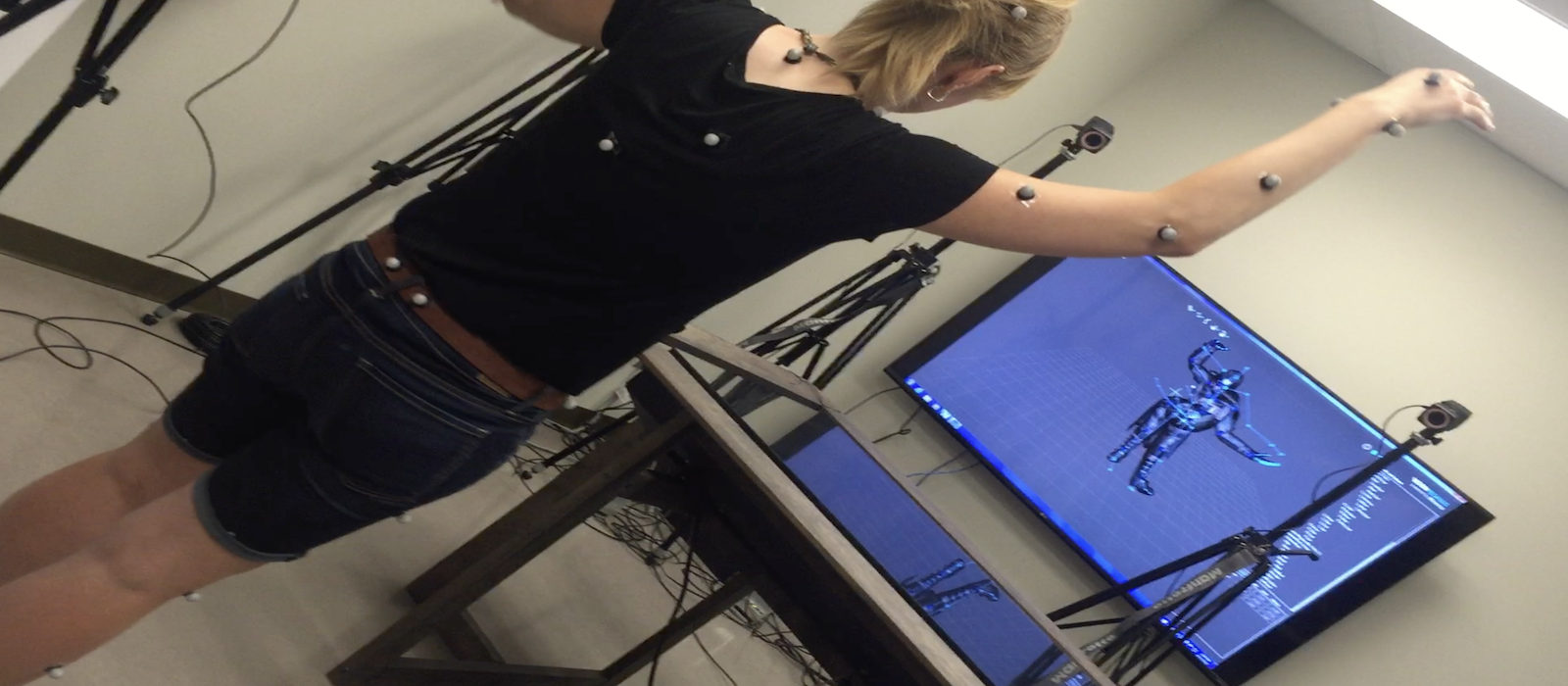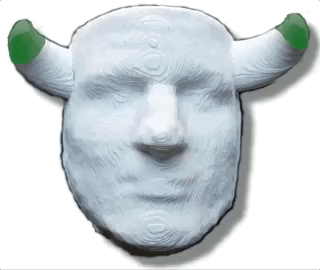CURRENT PROJECTS
Tailing Rebus: Set in Darkness
Dispatches: Mano a Mano
Lansdowne Revived
An Archival Atlas of Utopia
COMPLETED PROJECTS
Golden Days, Silver Nights
STAK: Serendipitous Tool for Augmenting Knowledge
Trading Frames: Interface Operations in Video Games
Beyond Mickey Mouse History
The Shape of Games to Come
Digitizing the Pyrates
From Synthespian to Convergence Character
Heritage Passages: Bytown and the Rideau Canal
Ethnography of Game Software Design
Move: Mapping Immobility
Infrabuild Carleton
StoryTrek: A System for Itinerant Hypernarrative
End-User Scripting for Online Immersive Training
Live Hypernarrative
TAILING REBUS: SET IN DARKNESS
Affiliated Researcher(s): Greenspan, Thorne, Pepper, Jeannerod
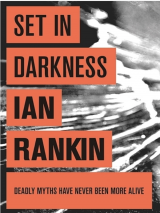 We’ve built a StoryTrek narrative to engage literary tourists and Ian Rankin fans in the physical spaces where his writing is set. This spatial story allows readers to move through Edinburgh while listening to an internationally best-selling Inspector Rebus novel, Set in Darkness (2000).
We’ve built a StoryTrek narrative to engage literary tourists and Ian Rankin fans in the physical spaces where his writing is set. This spatial story allows readers to move through Edinburgh while listening to an internationally best-selling Inspector Rebus novel, Set in Darkness (2000).
StoryTrek aligns the user’s physical location with story segments activated by specific motion patterns, allowing for complex, rich-media Augmented Reality narratives, which has been chosen because it brilliantly places the city of Edinburgh’s physical spaces, dark history, and myth at the centre of the narrative. The software allows historical maps and photographs to be layered over the contemporary map of Edinburgh, revealing the dynamic relationship between Edinburgh’s past and present.
Our final user tests were interrupted by the pandemic, but we’re hoping to resume soon. Meanwhile, you can read more about the Ian Rankin StoryTrek.
This research is supported by the AHRC, SSHRC, and Queens University Belfast.
Related Publications:
B.Greenspan, “Tailing Rebus: Plotting a Conspiracy in Digital Space.” In Dan Punday, ed., Digital Narrative Spaces. New York: Routledge, 2021, pp. 36-48.
AN ARCHIVAL ATLAS OF UTOPIA
Affiliated Researcher: Greenspan
Using our StoryTrek authorware, I am creating an “archival atlas” of New World utopias and dystopias. By mapping archival city narratives, photos, plans, blueprints and visionary descriptions onto actual geospatial sites, I use the city streets themselves as an open, interactive and dialectical interface to historical narratives of urban upheaval and renewal.
The archival atlas project combines literary and cultural critique with new collaborative tools for multimedia spatial analysis, tracing continuities between the earliest radical media and recent forms of networked activism. It aims to theorize the transition from textual archives to narrative databases, linking social and cultural geographies to recent debates over the future of libraries and the printed book.
This research was supported by a SSHRC Standard Research Grant.
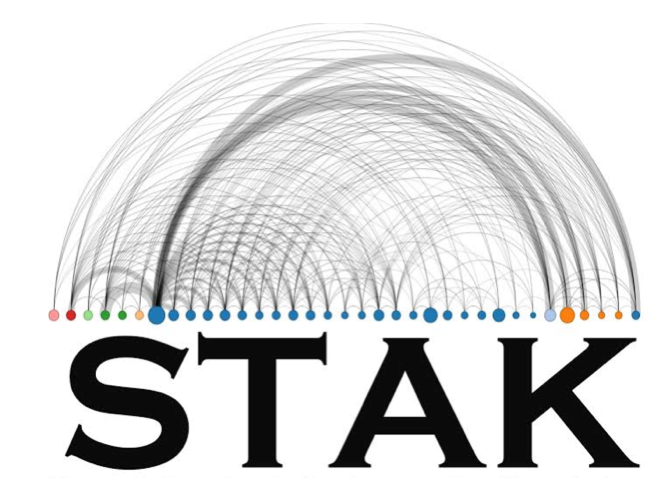
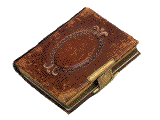
DISPATCHES: MANO A MANO
What does it take to follow a legend? In this Augmented Reality bibliothriller, you track a local celebrity through the tiled streets of Malaga, Andalusia, by following the audio-visual clues on your mobile device.
Dispatches from Malaga Parts 1, 2, & 3
GOLDEN DAYS, SILVER NIGHTS
Affiliated Researcher(s): Greenspan, Aldred, Benn, Carroll, Corrigan, Richler, Robertson, Stidwill, Thorne

Golden Days, Silver Nights is inspired by 19th century utopian writing. Told through audio voice over, archival images, and original artwork, this multimedia dystopian story asks what the world might have looked like had Presidential candidate William Jennings Bryan won the contentious 1896 election in the United States. Using mobile cinema and the StoryTrek locative media authoring system, we have designed a diminished reality interface that strips away the real world to reveal possible futures that might have been.
The story was published in the ELO’s Electronic Literature Collection Vol. 4, with support from a SSHRC Knowledge Mobilization Grant.
LANSDOWNE REVIVED
Affiliated Researcher(s): Greenspan
Lansdowne Park is a 40-acre heritage site in the heart of Old Ottawa South. Home to agriculture fairs, military parades, and the Central Canada Exhibition since 1888, Lansdowne was recently “revitalized” by a controversial plan chosen without any design competition, altering this historic landscape to make way for commercial interests.
We are preserving the park in a “diminished reality” memorial that uses the landscape as an interface to the historical record, giving local communities the opportunity to rethink Lansdowne’s design. With a mobile device in hand, visitors will be able to walk forward into the park’s possible futures or, by reversing direction, move time backwards and undo the current creative destruction, through a virtual demolition that recovers forgotten visions of the future park that never came to pass. Instead of augmenting reality, we want to strip it away to reveal how diminished our own present reality is compared with these forgotten and repressed alternatives.
STAK: SERENDIPITOUS TOOL FOR AUGMENTING KNOWLEDGE
Affiliated Researcher(s): Greenspan, Biddle, Corrigan, Li, Mould, Martin, Quan-Haase, Robertson, Stidwill, Thorne
Building upon our StoryTrek authoware, we worked with the HOTSoft Lab, GIGL Lab, and Western’s SocioDigital Lab to develop a tool that combines the benefits of physical stack searches with assisted web browsing, integrating physical and digital information in a seamless, intuitive interface.
STAK aims to bring together automated data mining tools, dynamic processing, and situational guides in a hand-held, touchscreen device capable of directing a user’s research path through virtual and physical data sources simultaneously.
This research was supported by a Research Development Initiative Grant from the Social Sciences and Humanities Research Council of Canada and the GRAND NCE.
Related Publications:
K. Martin, A. Quan-Haase & B. Greenspan. (2016). “STAK –Serendipitous Tool for Augmenting Knowledge: Connecting Digital and Physical Resources.” Digital Studies/Le champ numérique Vol. 9 (2017).
TRADING FRAMES: INTERFACE OPERATIONS AND SOCIAL EXCHANGES IN VIDEO GAMES
Affiliated Researcher: Benn
My dissertation examines trade affordances across three different video games and one novel: The Realm Online (1995), World of Warcraft (2004), Counter-Strike: Global Offensive (2012), and Neal Stephenson’s Reamde (2011). By trade affordances, I refer to those interfaces which facilitate the transition of digital items from one player to another. I align these video games with an increasing automation of trade practices within contemporary multi-user online games, as well as the growing relationship between online and offline economies. I provide a summary of early trade practices collected through blogs, playthroughs, developer notes, patches, and other ethnographic sources such as interviews and forum posts. Drawing on autonomist Marxist theories regarding the automation of work, I contend that trade in online games is an increasingly capitalized act reflective of conditions of capital outside the games. In order to demonstrate this phenomenon, I provide close-readings of the previously mentioned video games and novel, as well as two single-player games that directly critique the relationship between trade, capital, and play.
THE SHAPE OF GAMES TO COME: CRITICAL DIGITAL STORYTELLING IN THE ERA OF COMMUNICATIVE CAPITALISM
Affiliated Researcher: Thorne
The past decade has seen an increase in the availability of user-friendly game development software, the result of which has been the emergence of a genre of reflexive and experimental games. Pippin Barr, La Molleindustria’s Paolo Pedercini, and Davey Wreden are exemplary in their thoughtful engagement with an ever-expanding list of subjects, including analyses and critiques of game development, popular culture, and capitalism. These works demonstrate the power of games as a site for critical media theory. This potential, however, is hindered by the player-centric trends in the game industry that limit the creative freedom of developers whose work is their livelihood. Drawing on Freudo-Lacanian psychoanalysis, this project analyzes a selection of narrative games through the clinical structures of neurosis, perversion, and psychosis to understand how players interact with these systems. This perspective provides the basis for examining the subject of communicative capitalism and imagining the shape of critical games to come.
This research was supported by SSHRC.
‘BEYOND MICKEY MOUSE HISTORY’: THE DISNEY ARCHIVE AND THE CONSTRUCTION OF ANIMATION HISTORY AS DISCIPLINE, 1923-2018
Affiliated Researcher: Stidwill
This dissertation investigates changes in the disciplinary conception of American film animation history at the level of the archival collection. Focussing on historical collections associated with The Walt Disney Company (1923-2018), this dissertation takes the form of a series of chronologically ordered comparative microhistories, each of which analyzes a select archival collection(s) in order to show how its formulation shapes the conditions of historical knowledge production. I argue that these collections participate in (re)inventing or reworking animation history to conform with the values and interests of various stakeholder groups. As an often neglected subgenre of cinema studies, animation functions as a unique microcosm that makes visible the alternate spaces wherein commercial industries, cultural institutions, special interest groups, and academic disciplines converge to define it as a field of study.
This research was supported by SSHRC.
DIGITIZING THE PYRATES: MAKING A DIGITAL CRITICAL EDITION OF CAPTAIN CHARLES JOHNSON’S A GENERAL HISTORY OF THE PYRATES (1724-1726)
Affiliated Researcher: Reiche
As part of my thesis for the M.A. Specialization in Digital Humanities, I created a digital critical edition of Captain Charles Johnson’s A General History of the Pyrates that investigates its attribution to Daniel Defoe, and tracks the development and expansion of this work over its first four editions from 1724-26. My written thesis examined how digital editing practices can shed light on the collaborative nature of eighteenth-century print culture, dispelling notions of authorship as a form of original ‘genius,’ and signaling a literary economy built largely on its own brand of piracy in an age where copyright was in its youth, and one that in many ways mirrors our contemporary digital landscape.
SYNTHESPIAN TO CONVERGENCE CHARACTER: REFRAMING THE DIGITAL HUMAN IN CONTEMPORARY HOLLYWOOD CINEMA
Affiliated Researcher: Aldred
My dissertation examines the shifting treatment of digital human characters within Hollywood cinema. It observes a marked transition from the notion of the digital actor, or “synthespian,” as a perceived replacement for the human actor, to that of the digital character, which facilitates the performance of a Hollywood star at the same time as it eases the cross-media translation of the digital character as a kind of intellectual property. I consider how the construction and reception of the digital human has been shaped by the growing intersections between cinema and video games in the age of media convergence, paying special attention to how the relationship between actor and character has been re-configured as a kind of gamer-avatar framework where the actions of a human star ‘drive’ that of their (usually transformative) digital character. I examine what is at stake when this re-configuration increasingly co-exists with a broader transmediation of the digital character across various ancillary media platforms, where the consumer/spectator may take the reins and operate the digital character-as-avatar.
This research was supported by the Graphics, Animation and New Media National Centre of Excellence (GRAND NCE)
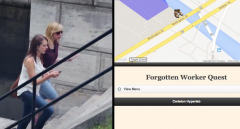
HERITAGE PASSAGES: BYTOWN AND THE RIDEAU CANAL
Affiliated Researcher(s): Greenspan, Aldred, Burr, Everrett, Horwitz, Whitson
We are developing a unique mobile interface for exploring the history, construction and continuing cultural impact of Ottawa’s Rideau Canal, a World Heritage Site, for the Virtual Museum of Canada. Heritage Passages will draw on materials from the Heritage Conservation Research Collection of the Archives and Research Collections (ARC) at Carleton University and Ottawa’s Bytown Museum to reveal a series of intertwined narratives. Digitized artifacts, texts, photos, video interviews, and architectural/engineering drawings will be interpreted through a series of interpretive paths, or “passages,” linked to a detailed, navigable timeline that tells the story of the canal’s conception and construction. These materials will also be linked to detailed architectural models of the locks and associated buildings, to be developed by the Carleton Immersive Media Studio (CIMS) with the aid of laser scanning technology. The exhibition will be available remotely via a standard web browser or, while on site, through a smartphone application developed using our proprietary StoryTrek authorware. Visitors will be able to download a GPS-enabled, augmented reality smartphone application providing on-site access to archival materials directly from significant locations along the canal.
Related Publications:
J. Whitson & B. Greenspan. “Whether to Play or Preserve the Past?: Creating The Forgotten Worker Quest”. Proceedings of Foundation of Digital Games 2013, Chania, Crete, May 14-17, 2013, Society for the Advancement of the Science of Digital Games.
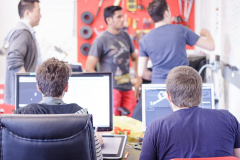
ETHNOGRAPHY OF GAME SOFTWARE DESIGN
Affiliated Researcher(s): Whitson
I am interested in how game developers, especially programmers, encourage some player behaviors, such as content creation, while reducing other behaviors, such as griefing, cheating, and hacking. This is part of a larger project that studies the relationship between developers and players. My hypothesis is that developers’ duties and the larger process of making games is changing due to the increasing emphasis on emergent open-ended gaming, the growth of both social gaming and user created content, and the increased ways to gather player feedback (e.g. game session data, forums, and fan sites).
Why this project is needed: Current social science research on games is focused on players. Reseachers critique games themselves, or they study player interactions in game spaces. This research ignores game development entirely and makes assumptions about how games are made and why without talking to anyone involved in the production process. While many professions work together to produce games (designers, writers, artists, producers, management and marketing personnel, etc.) the role of developers and programmers is especially overlooked.
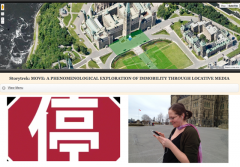
“MOVE”: MAPPING A PHENOMENOLOGICAL EXPLORATION OF IMMOBILITY THROUGH LOCATIVE MEDIA
Affiliated Researcher(s): Horwitz, Woods
The concept for the project “Move” came from an initial desire to produce a locative media based on the life and work of Duncan Campbell Scott, Canadian Confederate Poet and Superintendent of the Department of Indian Affairs from 1913-1932. Much of Scott’s life and work has molded the Canadian character through the exclusion and expulsion of Canada’s First Peoples. While numerous locative media projects have attempted to bring forth forgotten histories, voices and sites, there has been little exploration into creating an embodied understanding of exclusion through locative media. This experiment in “Diminished Reality” draws on disability studies and new media theory to explore the possibility of creating an embodied or phenomenological experience of immobility through locative media. The project is conceived as five separate segments that a user will be able to access through a mobile device. The segments are not mapped onto particular spatial coordinates; rather, spatial parameters are established once a user turns on her device. This allows a user to have an experience of immobility wherever she finds herself, and speaks to the reality of various individuals’ experiences of immobility.
The segments do, however, have an order that orchestrates a process of transformation for the user through which they are rendered immobile.This research is supported by a Research Development Initiative Grant from the Social Sciences and Humanities Research Council of Canada.
Related Publications:
“Postscript on the Cntl+Alt Society: Protocols for Locative Media.” In Shane Hawkins, ed., Access and Control in Digital Humanities. New York: Routledge, 2021, pp. 153-167.
INFRABUILD CARLETON: EXPERIMENTS IN ABDUCTED REALITY
Affiliated Researcher(s): Greenspan, Biddle, Barr, Bherer, Eaket, Khaled, Ma, Vist
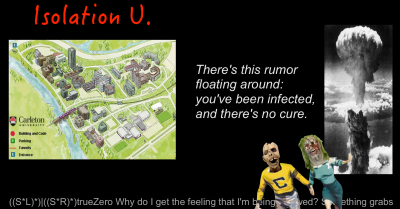 If deductive reasoning builds valid conclusions from known premises, and inductive reasoning derives laws from sensory data, then abductive reasoning builds models and hypotheses (which may or may not be either valid or actual) to explain the known facts. We are designing an “abducted reality” system to help provide possible explanations for the design of our physical environment. By combining our StoryTrek locative hypernarrative system with a head-mounted camera, 3D visor and IR motion tracker, we will abduct known reality, and replace the familiar spaces in which we live and work with hypothetical, experiential and contextualized alternatives.
If deductive reasoning builds valid conclusions from known premises, and inductive reasoning derives laws from sensory data, then abductive reasoning builds models and hypotheses (which may or may not be either valid or actual) to explain the known facts. We are designing an “abducted reality” system to help provide possible explanations for the design of our physical environment. By combining our StoryTrek locative hypernarrative system with a head-mounted camera, 3D visor and IR motion tracker, we will abduct known reality, and replace the familiar spaces in which we live and work with hypothetical, experiential and contextualized alternatives.
Our initial testbed involved the creation of a new kind of game, a utopian-themed Abducted Reality Game (A->RG), called Isolation U. At Isolation U., your avatar is a zombified undergrad at a post-apocalyptic campus, trying to survive the conformity virus. The game uses storytrek’s locative and motion-aware properties to enact a multiplayer quest that explores ideas of individual and collective agency, through the symbolic landscape of Carleton. In the process, gamers learn about Carleton’s history, and speculate on its future.
STORYTREK: A SYSTEM FOR ITINERANT HYPERNARRATIVE
Affiliated Researcher(s): Greenspan, Biddle, Barr, Eaket and Khaled
StoryTrek is a new hypertext system for mobile computing that adds fine-grained locational functionality to our current “live hypernarrative” system (Greenspan et al. 2006), an adaptive, online e-literature engine that builds stories on-the-fly from data mined in real time from the internet. We are integrating textual interfaces with GPS and digital mapping tools for the delivery of site-specific information in narrative form, allowing authors to create narratives that are geospatially sensitive and location-specific.
This research was supported by a SSHRC Image, Text, Sound and Technology Grant.
Related Publications:
Greenspan, B. (2009). “StoryTrek: A System for Itinerant Hypernarrative”. Ruth Page and Bronwen Thomas, eds., New Narratives: Theory and Practice, University of Nebraska Press.
Greenspan, B., Khaled, R., Barr, P., Eaket, C. and Biddle, R. (2009). “The Bias of Hypertext: Linking Narrative and Locative Media.” Presentation for MIT6:Stone and Papyrus, Storage and Transmission, International Conference, Massachusetts Institute of Technology, Cambridge, MA, April 24-26, 2009.
END-USER SCRIPTING FOR ONLINE IMMERSIVE TRAINING
Affiliated Researcher(s): Greenspan, Biddle, Aldred, Eaket, King, Mastey, Tran, Whitson
The objectives of this project, which received funding from the Ontario Research Network for Electronic Commerce (ORNEC), were to model the scripting approach currently used by our industry partner, Distil Interactive, to survey existing scripting approaches used for hypertext narratives and serious games, and to apply the assessment model of “cognitive dimensions of notation”. Outcomes included the creation of two new theoretical frameworks for studying digital games: the Playscripts model for analyzing the multiple strands and levels of scripting in computer games (presented at FuturePlay 2007); and the Neo-Immersive approach to game technology and player engagement.
This research was supported by a grant from the Ontario Research Network for Electronic Commerce.
LIVE HYPERNARRATIVE
Affiliated Researcher(s): Greenspan, Dormann, Caquard, Eaket, Biddle
We developed a new kind of dynamic or “live” form of hypernarrative, in which the content and structure of stories is determined by live information. This system would ultimately allow the creation of hypermedia narratives capable of mining public databases on the fly, in order to customize and integrate narrative material appropriate to the user’s particular temporal and geospatial context. Unlike other forms of hypermedia, a live hypertext narrative can actually be different every time it is read. More akin to an improvised performance than a recorded one, a live hypertext changes depending on where and when it’s accessed, and on what’s happening in the world and on the Web. Live hypertext thus presents a new development in the history of writing that challenges our inherited notions of the stability, fixity and even authority of printed text.
This research was supported by an Initiatives for the New Economy Grant from the Social Sciences and Humanities Research Council of Canada.
Related Publications:
“Live Hypernarrative and Cybercartography: You Are Here, Now.” Cartographica: The International Journal for Geographic Information and Geovisualization, Vol. 41, No. 1. (1 January 2006), pp. 35-46.
